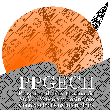Banca de QUALIFICAÇÃO: REGINALDO IKAURA XERENTE
Uma banca de QUALIFICAÇÃO de MESTRADO foi cadastrada pelo programa.DISCENTE : REGINALDO IKAURA XERENTE
DATA : 19/05/2025
HORA: 14:00
LOCAL: CAMPUS DE BARRA DO BUGRES
TÍTULO:
GRAPHICS IN THE INTERCULTURAL CONTEXT AT THE KURÂ-BAKAIRI SCHOOL
PALAVRAS-CHAVES:
Kurâ-Bakairí People. Indigenous School Education. Teaching Graphics
PÁGINAS: 127
GRANDE ÁREA: Outra
ÁREA: Ensino
RESUMO:
This research was conducted in the Kurâ-Bakairí Villages communities, in the Bakairi Indigenous Land, located in the municipalities of Paranatinga and Planalto da Serra, state of Mato Grosso, Brazil. Using a qualitative hetinographic approach and participant observation, the research had as its main objective to present the Kurâ-Bakairí culture, specifically the graphics. And as specific: 1) to present the Kurâ-Bakairí people in relation to the social and cultural aspects; 2) to present the communities that belong to the Bakairi Indigenous Land, from the origin to the present day; 3) to produce a catalog containing the Kurâ-Bakairí graphics. To create this material, it was necessary to have the help of teachers, principals and students to illustrate the figures or draw the male and female body paintings, in addition to conversations with the elders. This material may be used at the Kurâ-Bakairí State Indigenous School, José Pires Uluko Municipal Indigenous School, Aturua State Basic Education School, Otávio Kurewe Municipal Indigenous School, Paikum Municipal Indigenous School and Vicente Kaiawa Municipal Indigenous School of the Bakairi Indigenous Land in the Paranatinga region of MT, with the aim of strengthening the identity and culture of these people, which was revitalized at the Kurâ-Bakairí State Indigenous School, an institution that is the result of intense demands by these people for the recognition and legitimization of their culture. Once learned orally, it is engraved in the memory, always practicing in class with other classmates, with the student acting as an instructor for the companion, but slow in learning, once what we learn in school and in life remains for the rest of our lives, we will never forget it.
MEMBROS DA BANCA:
Presidente - 121144002 - CLÁUDIA LANDIN NEGREIROS
Interna - 535.535.001-15 - EUNICE DIAS DE PAULA -
Externa à Instituição - 882.723.461-68 - ISABEL TERESA CRISTINA TAUKANE - UFMT



